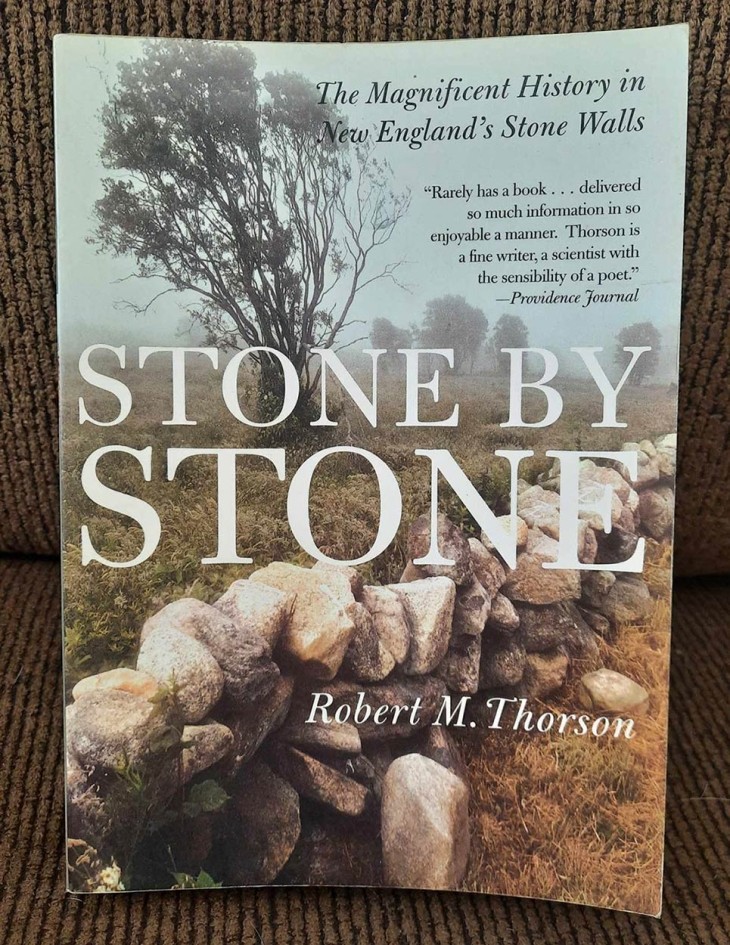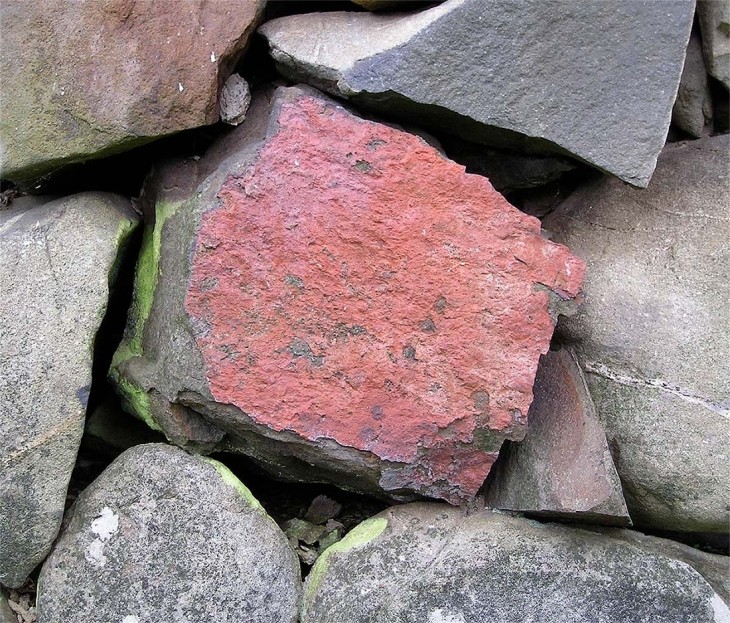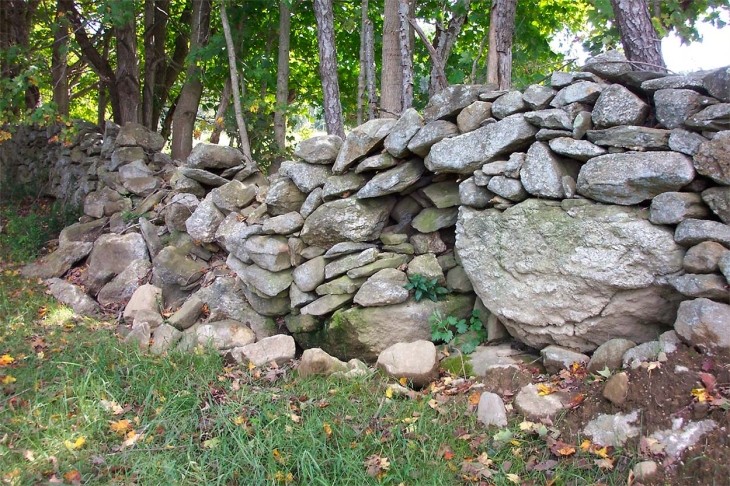
A child of the Midwest, Robert “Thor” Thorson loved the lakes and forests of that region from an early age. Although he started his career as a geologist in Alaska – with a master’s degree from University of Alaska and a PhD from University of Washington – he became fascinated with the stone walls of New England after moving to Connecticut in 1984. Since then, he has written numerous articles and several books about stone walls and other topics and continues to teach at University of Connecticut, a post he walks to each workday from his home nearby.
I was born in Wisconsin, and spent parts of my childhood in the suburbs of northern Chicago and consider myself as being from Minnesota. But all my earliest memories are from North Dakota. That was the family homestead. We spent a year or two in the great outdoors of North Dakota – little farmhouse on the prairie kind of thing. It was really cool. It was a rather different period of time. My mother would basically sweep us out of the house in the morning to go engage outdoors and basically the subtext was, “We’ll see you at lunch. Don’t die.” It’s so different from the way we raised our kids, and the way our grandkids are being raised.
I think I was outdoors almost my entire childhood. I don’t have a lot of indoor memories – except of libraries. Being a restless, curious kid, I was tree climbing and cave digging and cliff walking and trestle jumping and lake swimming and just everything. In the early years, we always went up to the lake in the summer. The best part of childhood life was just to be free on the edge of the lake. The cottage was just a little tiny thing. It was just enough of a cottage to have a kitchen going and a place to crash on the porch, and the rest of your life was outdoors.
I was one of those guys who wasn’t going to go to college. High school felt like a prison. I was in a conservative, small town in northern Minnesota. I was one of those very immature but very active, very deliberate, very outspoken, very difficult kids. When I was 17, 18, 19 – I wasn't pleased with my country. The Tet Offensive was in 1968. Martin Luther King and Robert Kennedy were both assassinated that same year, along with the Cambodian invasion, massive protests at the Democratic Convention in Chicago, and Nixon’s reelection campaign. It was just so ugly all the time. Their idea to handle a kid like me was just to stick you in Jackass Row. It wasn’t even clear that I would graduate. My two favorite courses were auto mechanics and typing, because they were both useable, saleable skills.
But then I stumbled onto Henry Thoreau. I think in many ways, landing onto his words in high school really saved me, because he’s the only one who seemed to make sense. Admittedly, this is a narrow northern, small town, white, male perspective, but he really made sense to me. In some ways I stabilized when I began to read his stuff. Now I’m on the board of the Thoreau Society, have published three books about him, and have a new one in the works for Princeton University Press. Thoreau has been the other theme, besides stone walls, that went deepest.
When I went to college, I needed to take a gen ed science requirement. Somebody said, why don’t you take geology, because it’s easy – meaning easier than physics or chemistry or whatever. I totally shocked myself by doing extremely well, because I was interested in it. I wanted to be a geologist, but I didn’t think I could, because they didn’t even have a geology department in our small state college in Bemidji, Minnesota. I went to Alaska to get a master’s degree. I got into some Midwest schools, but I really wanted to go to Alaska, so I went up there in 1973 with about a dime in my pocket. I spent everything I had to get there. Nothing mattered except training to be a geologist. I became a geologist and worked for the US Geological Survey for four years.

In 1970 on the first Earth Day, I had made a decision to sell my car and buy a bike. Of course, you can’t do that while raising a family. But you can think and act that way when you’re 19 or 20, and I did. I remember thinking, “Do I really need this giant, gas-guzzling, V-8 Chevy?” I sold it and bought a bicycle, and I have been very committed to an earthly approach since then.
My wife is from Maine, and I met her in Alaska. When we left Alaska, I had three criteria for a job search: I wasn’t going to live in a city no matter what; I wanted to live within an hour of the ocean – because I became intoxicated with it when I first saw it at age 19 or 20, I couldn’t believe such a thing existed; and I wanted to live north of the glacial border, because the terrain and the landscape is so distinctive and so much more interesting. Much of New England is all of that. I don’t travel any more than I have to. New England is a wonderful place if you want to travel by car with fairly short trips. I moved here in 1984 figuring I’d be here for a few years, but I ended up staying, for four decades and counting.
In 1991 I had a year-long sabbatical at Dartmouth. I read everything I could find about stone walls. I wanted to know why do they look the way they do? Why are they the size they are? Why are they the extent they are? Why are they the spacing they are? Why are they here – not in general – but why in the detail? I couldn’t find much to read other than oral tradition and Yankee wisdom and stuff that couldn’t be grounded down to a physical fact. That’s kind of where it started. I began numerical modeling on the distribution and concentration of stone and the size of walls and testing hypotheses about this and that. The result of that was Stone by Stone, which was published in 2002. The book is still selling, and it came out as an audio book in 2022. This wasn’t my plan. I just went into the Baker Library at Dartmouth, and I couldn’t find the information I wanted, so I sat down to write an introduction to some of the numerical modeling that I was doing. And the introduction expanded to 85 pages and then into the book.
Stone walls were part of an agroecosystem, and now most are part of a woodland ecosystem, because the agro is largely gone. If you drive from Boston to Buffalo on backroads, stone walls are nearly everywhere east of the Hudson River and generally absent to the west. They’re hard to miss. There are various estimates for the length of stone walls in New England. The best estimate I know is 240,000 to 250,000 miles of stone walls in New England. That’s around the Earth 10 times. That’s a lot of wall. The phenomenon is too large to be explained as architecture. It’s too massive.
My point of view is that the phenomenon is so huge that you can’t explain it as architecture or even culture. I see it as human ecology. Ninety percent of the people had one job when pioneering settlement happened and for at least a century – their job was to go out and clear some land and have a farm. This is classic New England. And you do your farm until circumstances change and you give it up – you go to the city or you go out west or something like that. We know that overall cultural trend about the settlement and abandonment of New England. That’s pretty straightforward.
The idea is that by changing the surface insulation and the exposure – by cutting down trees – you’re really ramping up soil freezing, frost heaving, spring runoff, in addition to losing soil organics. You’re just changing the physicality of the soil in a tremendous way. Basically, the story is that when you do that, the stoniness – the rising up and concentrating on the surface – changes. This is still hard to quantify, and a lot of the research still needs to be done. But the thesis at least is that the amount of stone that shows up in the soils is beyond what you expected. So you’re carting it off and carting it off. It goes from piles to low walls, and you just pitch it on the fence lines. But eventually there’s so much that you can begin to do something with it. And also the wood is disappearing, so the stone makes the perfect boundary marker and bottom of a fence.

It’s a very complicated story. But the offshoot is that shedding stone off of the landscape as a consequence of your own environmental impact of deforestation allows and (or) forces you to do something with it. You have an incentive to stack things, because it clears space – and it looks good later. It economizes your storage. The stone walls grew from the bottom up to replace the wooden fence. In a very complicated way, we ended up with a lot of hybrid fences, and when all the wood rots, all we see is the stone. But the key is that the copious stone is an environmental impact.
We had 15 to 20,000 years to progressively bury the glacial litter. The stones ended up being below the depth of frost in an old growth forest. But when you clear that forest away, the stone is no longer below the frost line; it can be grabbed and brought up to the surface. These are cascades of geological processes. To me, it seems 19th century farmers found themselves in the middle of altered circumstances, and needed to do something about it. Something similar is happening with 21st century global climate change: we’ve altered the circumstances and now we need to do something about it. So these early farmers found themselves in a circumstance where there was a lot of stone. And it didn’t come at them like a blitzkrieg. It was a dribble, and it continued. And when you get enough stone, you can do something with it. You can’t do much with a nickel, but you can do a lot with a million nickels.
Now, these stone walls are habitats. Everybody knows they’re habitats, because they’ve seen chipmunks living in walls, and mice too. They’re volumes that creatures can live in, and they’re edges between habitats. You can have ferns on one side and grass on the other side, because one side banks up the moisture. You can have a shady side and a sunny side, a windy side and a leeward side, an upslope side and a downslope side. These things are totally enmeshed in the landscape and the woodland ecosystem. In lots of places, you don’t see a lot of opportunities for lichens and moss except on the stone of these walls.
Stone walls have become the binding threads that glue our regional culture together. To me, the stone wall in the woods is really more beautiful than either the woods or the wall. It saliently exhibits nature’s redemption. There’s that element of redemption that is missing in untrammeled wilderness – if you even believe in that concept.




Discussion *